November 9, 2017
Community advice to young hydrologists, Part 1
Posted by Tom Gleeson
We at Water Underground loved reading Young Hydrologic Society’s post titled “Community advice to young hydrologists” – an advice column written by a network of established scientists in the field. We appreciated the column so much, in fact, that we have decided to re-blog the post to you (with YHS’s consent, of course). We’ve split up their post by question, and have added in hyperlinks to all contributors and related material (as has always been our inclination). While reading, keep an eye out for advice given by Water Underground founder Tom Gleeson! Happy reading!
__________________________________________________
Question: What book or paper has been most influential to your career and why?

Groundwater by Freeze and Cherry – this textbook, now out of print, was a critical reference as I began my graduate training in hydrogeology and I still refer to it today.
Jean Bahr (University of Wisconsin)
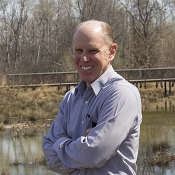
I can think of no single one. However, papers that were a combination of field observations and clever analyses leading to new insights always are intriguing. Papers which I find of little value are those that propose a new modeling approach with little to no field verification, or which use existing models to reach some conclusion. For example, we seem to be seeing a proliferation of papers using complex models to highlight some “new” effect of climate change on the hydrologic cycle, with no grounding in hindcasts. (See this, also) The musings of Keith Beven always have been insightful, including his Advice to a Young Hydrologist.
Jerad Bales (CUAHSI)

I can’t identify single “most influential” books or papers – I learned early to read as widely as possible, and not just within narrow/specific research problems of direct interest. I have been inspired by a range of articles – including books on philosophy, history of physics, etc. – which broadened my approach and ways of looking at a given problem. Indeed, some of my most influential work developed from studying methods and approaches in statistical physics and physical chemistry.
Brian Berkowitz (Weizmann Institute of Science)

The most important influence was a person – Mike Kirkby and particularly the undergraduate course on quantitative hydrology he taught at the University of Bristol when I was taking my degree there (later, I would do a post-doc with him at Leeds that resulted in the development of Topmodel). That gave me a lot of reading to do – but it was probably not the hydrological reading that had most influence, but rather the papers on theoretical geomorphology starting with Horton BGSA 1945, then picked up by Kirkby, Frank Ahnert and others in the late 1960s. I struggled to understand them (at the time I wanted to be a geomorphologist but I have never quite finished getting the water part right) but they left me the idea that it was possible to theorize about environmental processes and systems in approximate but useful ways.
During my PhD the most influential paper was undoubtedly Freeze and Harlan JH 1968, and the papers about the field site I was applying my model to by Darrell Weyman (HSB 1970, IAHS 1973). If I had talked to him a little more (he was doing his PhD at Bristol while I was an undergraduate) or read those papers more carefully, then I might have been more realistic in my PhD modelling.
The most important book at that time was Zienkowicz, Finite Element Modelling (that was the technique I was trying to master). Hillslope Hydrology edited by Kirkby was also important but came later.
Keith Beven (Lancaster University)
.

Paper: Scale of Fluctuation of rainfall models by I. Rodriquez-Iturbe. It formed the basis for my MSc research that I did during 11 months in Davis California (As a Dutch Student from Wageningen). It was extremely difficult stuff, but I kept on it and it understanding gave me the stamina to really dig into a subject. It was the basis for my first paper entitled “Analytically derived runoff models based on rainfall point processes” in WRR. To obtain better background I also read in depth the influential.
Book: Random Functions and Hydrology by R. Bras and I. Rodriquez-Iturbe.
Marc Bierkens (Utrecht University)

Dooge’ 1986 Looking for hydrologic laws in WRR. This paper gives a broad perspective on science, including scales.
Günter Blöschl (TU Vienna)

Konrad and Booth (2005), Hydrologic changes in urban streams and their ecological significance, American Fisheries Society Symposium, 47:157-177. This paper is a bit outside my area of expertise, but I think the linkage they make between physically measurable streamflow changes and stream ecology represents a fundamental shift in thinking from engineering hydrology to more of an eco-hydrology perspective. They illustrated that we need to go beyond analyzing just changes in peak flow or low flows (or fixed percentiles), to look at more derived metrics that better capture hydrologic regime change.
Laura Bowling (Purdue University)
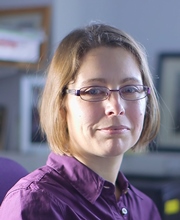
That is a very hard question. As a Geography undergraduate student, I had to write a particular essay on the “all models are wrong” theme and this involved critiquing two papers which completely changed my worldview about models and modelling: Konikow and Bredehoeft’s 1992 ‘Ground-water models cannot be validated’ Advances in Water Resources 15(1):75-83. and Beven’s 1989 ‘Changing ideas in hydrology – the case of physically-based models’ Journal of Hydrology.
But in the last year, I would say it has been Lab Girl by Hope Jahren (2016) who is a gifted and talented scientist and writer and has the knack of intertwining the natural world with tales of remaining brave in your career. I wish I’d had the opportunity to read it earlier in my career.
Hannah Cloke (University of Reading)

Ecological and General Systems – H.T. Odum. This book explores general systems theory in the context of ecosystem behaviors. It is holistic, comprehensive, and full of important insights about the structure and dynamics of systems.
Matthew Cohen (University of Florida)

It is a novel by Milan Kundera: “Slowness”. My natural tendency is to rush up, be as fast as possible, quickly fix things… Yet, speed often leads to miserable outcomes. Many lines of Kundera’s book are still in my mind, and they work as a continuous reminder for me that only slowness allows thoughtful consideration, serious reflection, and appreciation of reality. Realizing this has strongly influenced my academic career as it made me focus on the quality (and not the quantity) of my work.
Giuliano Di Baldassarre (Uppsala University)

Several hydrogeology-related texts were very helpful for me. These include some of Mary Hill’s papers, John Doherty’s PEST manual (as much for the philosophy as the instruction), some of Jasper Vrugt’s early papers, and work by both Wolfgang Novak and Steve Gorelick on measurement design. The real recommendation would be to find authors that you enjoy and read as much of their work as possible – in this category, I would add Shlomo Neuman, Randy Hunt, Hoshin Gupta, Dani Or, Keith Beven and Graham Fogg. I am sure that I am forgetting more than I have listed. I think it is equally important to read broadly. Rather than provide a list, I’ll encourage you to look at my recent paper in Ground Water (Sept 2016) for some suggestions!
Ty Ferré (The University of Arizona)
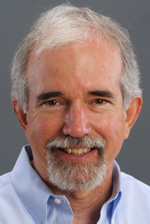
Book: Groundwater Hydrology by David Keith Todd, 1st edition, 1959. As a 3rd-year undergraduate in hydrology at the University of New Hampshire in 1973, this book (and course by Francis Hall) kindled my interest in groundwater and completely changed my career path, which previously was essentially an aimless sleepwalk through my major in mathematics.
Paper/report: Kaiser, W. R., Johnston, J. E., and Bach, W. N.. 1978, Sand-body geometry and the occurrence of lignite in the Eocene of Texas: The University of Texas at Austin, Bureau of Economic Geology Geological Circular 78-4, 19 p. This paper demonstrated in stunning detail how modern borehole geophysical data together with understanding of the geologic genesis of sedimentary deposits could be used to create unprecedented subsurface maps of aquifer/aquitard system heterogeneity and structure. This led me down the long path of better integrating groundwater hydrology and geologic depositional systems.
Graham Fogg (UC Davis)
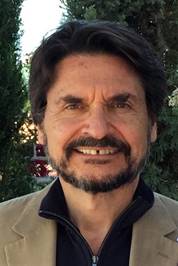
My interests have been in predictive hydrometeorology. The following were influential books at the start of my carrier in the late 70s and early 80s: Dynamic Hydrology by Eagleson; by Wallace and Hobbs; Applied Optimal Estimation by Gelb (ed). These represented the fields of hydrology, meteorology, and estimation theory with applications to prediction, and were the necessary pillars to build predictive hydrometeorology.
Konstantine Georgakakos (Hydrologic Research Center in San Diego)

Haitjema and Mitchell-Bruker (2005) which taught me to think of groundwater as a process that interacts with topography, climate and geology in complex but predictable ways.
Tom Gleeson (University of Victoria)

The paper that has been most influential to my career is most certainly “Johnston, P. R., and D. H. Pilgrim (1976), Parameter optimization for watershed models, Water Resources Research, 12(3), 477–486. I read this paper during my graduate work in the early 1980’s and was intrigued by their report that “A true optimum set of (parameter) values was not found in over 2 years of full-time work concentrated on one watershed, although many apparent optimum sets were readily obtained.”
On the one hand this paper clearly identified an important problem that needed to be addressed. On the other (as I often remark during talks on the subject), I think it was remarkable as an example of a paper reporting the apparent “failure” of the researchers to achieve their goals … how often do we see people reporting their failures in the literature these days :-). More of this kind of work – reporting a scientific study and accurately reporting both successes and failures … but especially failures … is critically important to the progress of science, so that people can both contribute to solutions and also avoid unsuccessful forays down paths already tried.
In any case, the paper clearly pointed me towards an important problem that led to me adopting a path of research over the past decades, which led to the development of the SCE and SCEM optimization algorithms (and indeed a whole field of optimization developments), studies into impacts of model structural deficiencies, multi-criteria methods for parameter estimation, the diagnostic model identification approach, and more recently the Information Theoretic approach.
The 1990 paper by Michael Celia et al on the numerical solution of Richards equation, recommended to me by Philip Binning at the beginning of my Honours Project at Newcastle Uni. This paper made a big impression on me because it provided a very clear exposition of how to solve a challenging modelling problem – and played a bigly role in getting me interested in research.
Dmitri Kavetski (University of Adelaide)
.
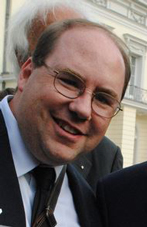
The Ecological Studies Series, published by Springer, was the most influential in my career because several books published in the Series (e.g., Forest Hydrology and Ecology at Coweeta edited by Swank and Crossley and Analysis of Biogeochemical Cycling Processes in Walker Branch Watershed edited by Johnson and Van Hook) sparked my interest in forest hydrology and biogeochemistry. In tandem with the superb mentorship of Prof. Stanley Herwitz (Clark University), I decided to embark upon a career as a forest hydrologist as a sophomore in college. I never looked back.
Delphis Levia (University of Delaware)
.

The papers of the series “Plants in water-controlled ecosystems” (2001, Advances in Water Resources 24), by Laio, Porporato, Ridolfi, and Rodriguez-Iturbe have been among the first and most influential I have read. Their clean, analytical approach to the complex interactions among vegetation, soil, and climate remains deeply inspiring. As an example of inter-disciplinary work (actually outside hydrology), I would like to mention the book by Sterner and Elser (2002) “Ecological stoichiometry. The biology of elements from molecules to the biosphere” (Princeton University Press) – a great example of how integrating knowledge from various sources around a common theme can yield deeper understanding and perhaps even lay the foundation of a new discipline.
Stefano Manzoni (Stockholm University)
.
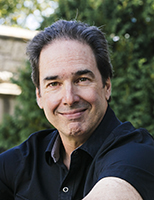
The Hewlett and Hibbert 1967 conference paper “Factors affecting the response of small watersheds to precipitation…” is perhaps the best paper ever written in hydrology. For a full homage, please look here. The paper is field-based, theory focused and a blend of bottom-up and top-down research, before that was even ‘a thing’. It inspired me in my graduate research in the 1980s; I continued to read it and ponder it in my first years as a professor, as I strived to follow in Hewlett’s footsteps. He was my mentor even though he retired before I could ever meet him.
Jeff McDonnell (U Saskatchewan)
.
 In general, the books that have been most influential to me refer to sister disciplines. The reason is that I found illuminating to study methods and models used in statistics and economics for the purpose of applying them to hydrology for the first time. Thus, the most influential book to me has been “Statistics for long-memory processes”, by Jan Beran. The very reason is that I found there a detailed explanation of models that were useful to get to target with my Ph.D. thesis.
In general, the books that have been most influential to me refer to sister disciplines. The reason is that I found illuminating to study methods and models used in statistics and economics for the purpose of applying them to hydrology for the first time. Thus, the most influential book to me has been “Statistics for long-memory processes”, by Jan Beran. The very reason is that I found there a detailed explanation of models that were useful to get to target with my Ph.D. thesis.
Alberto Montanari (University of Bologna)
.
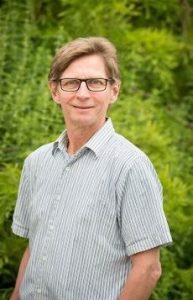
Chamberlin TC. 1890. The method of multiple working hypotheses. Science 15: 92-96 (reprinted in Science 148: 754–759 [1965]). I read this paper as part of a second-year course in Archaeology, which I took as an elective in my undergraduate program. Although the writing style is somewhat archaic, this article introduced me to the value of hypothesis-based thinking in science and the need to avoid favouring a pet hypothesis or model. It is instructive also to read the many follow-up essays to gain a broader perspective on hypothesis-based research and, more broadly, the “scientific method.”
Dan Moore (University of British Columbia)
.

I think I was more influenced by my peers, colleagues, mentors, supervisors and friends as I learn better through discussions and challenges. One of the more memorable papers is one of Manning (Manning, R. (1891). “On the flow of water in open channels and pipes,” Transactions ofthe Institution of Civil engineers of Ireland.) and it’s associated history. In this paper he actually suggested a far more ‘complex’ formulation than the formula which is today widely known as the Manning equation – history has it that it was never adopted widely as well as many subsequent more more sophisticated formulations. Science doesn’t work linear and we are sometimes less rational or objective (if the latter is actually possible) than we believe.
Florian Pappenberger (ECMWF)
.
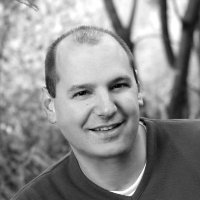
“Show me a person who has read a thousand books and I’ll show you my best friend; show me a person who has read but one and I will show you my worst enemy.” I have been influenced by many and I can’t say one is *the* most influential or important alone. At the moment, I am reflecting on (McCuen RH. 1989. Hydrologic Analysis and Design. Prentice Hall: Englewood Cliffs.) As far as being a hydrology textbook it is not particular special, but it is written extremely clearly with a lot of good step-by-step workflows. Most importantly, the book integrates throughout its whole development the concept of analysis versus synthesis, and this has been central to how I approach my research. We do both analysis and synthesis.
Gregory Pasternack (UC Davis)
.

This is very difficult to say. I must admit that my academic work started from engineering practice and I only started reading the international literature very late in my career. But a book that has been very influential to me was the book by Fischer et al. (1979) “Mixing in inland and coastal waters”. Fischer soon died in an accident after this book was published. The book introduced me to the fundamentals of mixing processes in estuaries, on which I had done substantial field research and had developed my own practical engineering method, which I still use, but which lacked a fundamental theoretical basis. I am still working on finding this fundamental basis, and Fischer’s book put me on that track.
Hubert Savenije (TU Delft)
.

It would be tough to answer what’s been the most influential to my career as a whole, but I could answer what was the most influential to my early career, and that was Menke’s Geophysical Data Analysis: Discrete Inverse Theory. I labored through that book for years during my PhD. My copy has dog-eared pages and writing throughout as I tried to figure out inversion methods. Finally getting my head around the mathematics of inversion really opened up some doors for me early on. Davis’ Tools For Teaching also really helped me think about how to be as effective a teacher as I could be.
Kamini Singha (Colorado School of Mines)
.

Books are hardly ever influential once you are actually ‘in’ research. Early on, look for the best review articles in your field. They will ‘set the scene’ for you.
Keith Smettem (The University of Western Australia)
.

“Opportunities in the hydrologic sciences”, National Academy Press. This landmark book which defined hydrology as a science appeared right at the start of my PhD. It provided a nice framework for my own research and that of my fellow PhD students in those days.
Remko Uijlenhoet (Wageningen University)
.

It is difficult to select one single work from the literature that has been influential over my entire career in groundwater flow and transport modeling. But, there is one book that I used as a grad student that I still refer to today. It is “Conduction of Heat in Solids” by Carslaw and Jaeger. The book is a treatise on analytical solutions to diffusion equations. The lesson for me is that knowledge from other disciplines (in this case thermal engineering) can be applied to problems in hydrology. Another lesson is that we can learn a lot and gain important insights through wise approximations that have analytical solutions.
Al Valocchi (University of Illinois at Urbana-Champaign)
.

Abramowitz & Stegun: Math is something you look up, not something you try to memorize.
Nick van de Giesen (TU Delft)
.

In hydrology, some of the most influential books for me have been Handbook of Hydrology (edited by David Maidment) and Principles of Environmental Physics (Monteith & Unsworth). These two books are so rich in physics, empirical equations, recipes, and references. Of course the times have changed and nowadays you can google almost anything, but some of the chapters in these books are so well written that I still regularly use them. They also have the benefit that they summarise areas of research where things haven’t actually changed too much since the 80ies – the physics we use haven’t become that much more sophisticated, and sometimes in fact less so; whereas the field measurements on which a lot of the empirical rules and equations are based generally also haven’t been added much to since.
Outside hydrology, some books that have made me think differently about the field and my research include
Emergence: The Connected Lives of Ants, Brains, Cities, and Software (Johnson) – one of the first popular science books I read that made me think different (about ecohydrology)
The Sceptical Environmentalist (Lomborg) – I didn’t accept his reasoning but it was seductive and it forces you to really pick apart the logical and rhetorical flaws he uses.
Thinking, fast and slow (Kahneman) – which really made me realise the questionable quality of my analytical rigour and decisions in general (also those of anyone else, though!).
Albert van Dijk (Australian National University)
.

Physical Hydrology by Dingman and Elements of Physical Hydrology are both great textbooks. Why: just lots of “basics” well explained, emphasizing the need to understand PROCESSES.
Doerthe Tetzlaff (University of Aberdeen)
.

House at Pooh Corner, specifically, Chapter VI. In which Pooh invents a new game and Eeyore joins in. The first paragraph is an awesome description of a classic watershed and affirms my theory that hydrology is truly everywhere… even on Mars. Indeed, the search for “life” has largely been a search for “water.”
Todd Walter (Cornell University)
.
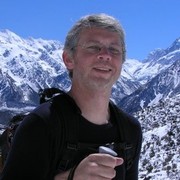
Comparative hydrology, edited by Malin Falkenmark and Tom Chapman (1989). This book is one of the first to examine global hydrology phenomena. It asserts that a comprehensive and systematic description of hydrological processes is (i) possible (ii) not too complicated. Until then I’d thought the task was impossible, so I found the approach inspirational for my research.
Ross Woods (University of Bristol)



